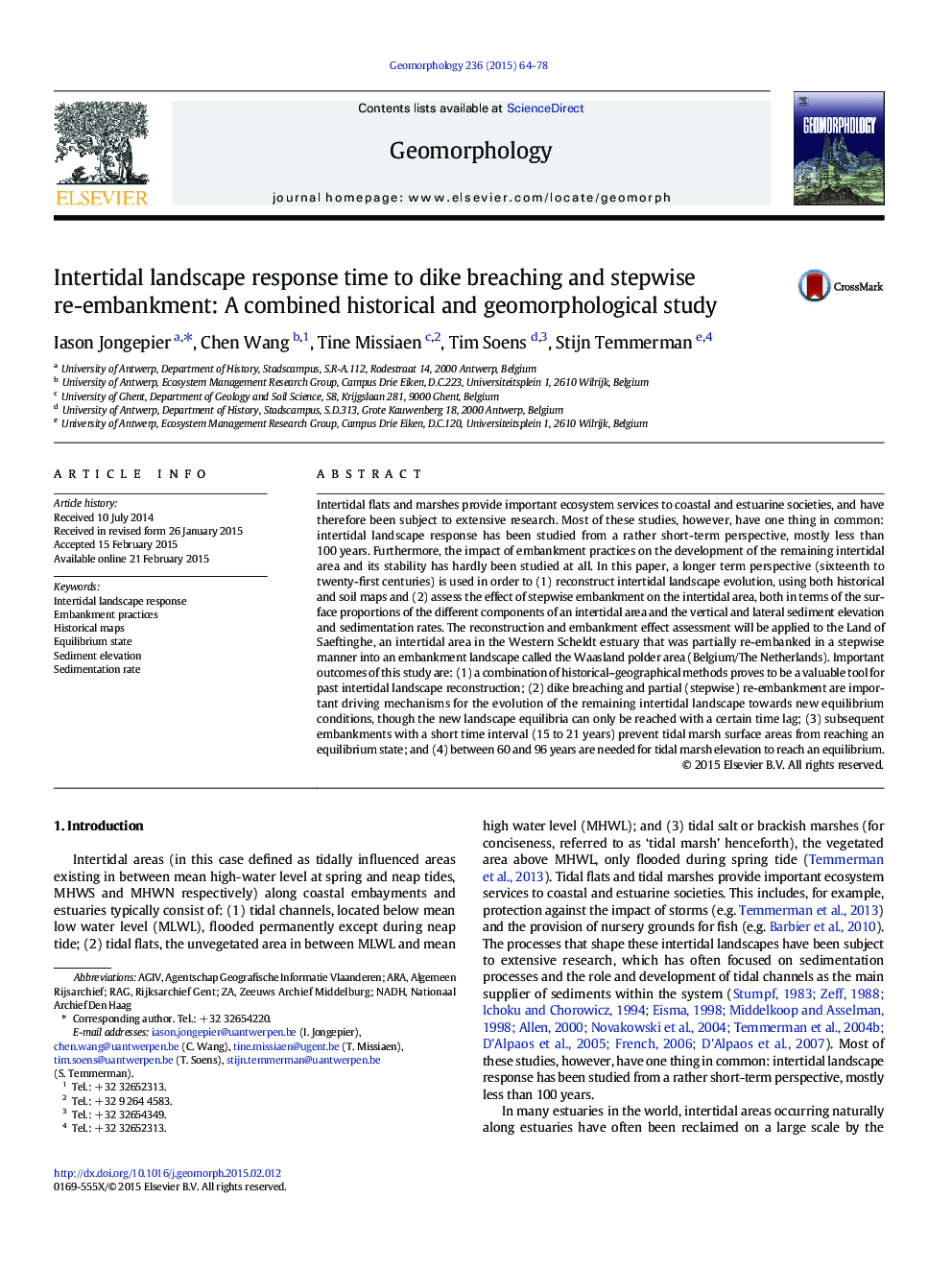| کد مقاله | کد نشریه | سال انتشار | مقاله انگلیسی | نسخه تمام متن |
|---|---|---|---|---|
| 4684252 | 1635413 | 2015 | 15 صفحه PDF | دانلود رایگان |

• We reconstruct intertidal landscape evolution, using both historical and soil maps.
• This combination of historical–geographical methods proves to be a valuable tool.
• Stepwise embankment has important consequences for intertidal area evolution.
• Subsequent embankments prevent equilibrium marsh surface areas.
• Between 60 and 96 years are needed for marsh elevation to reach an equilibrium.
Intertidal flats and marshes provide important ecosystem services to coastal and estuarine societies, and have therefore been subject to extensive research. Most of these studies, however, have one thing in common: intertidal landscape response has been studied from a rather short-term perspective, mostly less than 100 years. Furthermore, the impact of embankment practices on the development of the remaining intertidal area and its stability has hardly been studied at all. In this paper, a longer term perspective (sixteenth to twenty-first centuries) is used in order to (1) reconstruct intertidal landscape evolution, using both historical and soil maps and (2) assess the effect of stepwise embankment on the intertidal area, both in terms of the surface proportions of the different components of an intertidal area and the vertical and lateral sediment elevation and sedimentation rates. The reconstruction and embankment effect assessment will be applied to the Land of Saeftinghe, an intertidal area in the Western Scheldt estuary that was partially re-embanked in a stepwise manner into an embankment landscape called the Waasland polder area (Belgium/The Netherlands). Important outcomes of this study are: (1) a combination of historical–geographical methods proves to be a valuable tool for past intertidal landscape reconstruction; (2) dike breaching and partial (stepwise) re-embankment are important driving mechanisms for the evolution of the remaining intertidal landscape towards new equilibrium conditions, though the new landscape equilibria can only be reached with a certain time lag; (3) subsequent embankments with a short time interval (15 to 21 years) prevent tidal marsh surface areas from reaching an equilibrium state; and (4) between 60 and 96 years are needed for tidal marsh elevation to reach an equilibrium.
Journal: Geomorphology - Volume 236, 1 May 2015, Pages 64–78